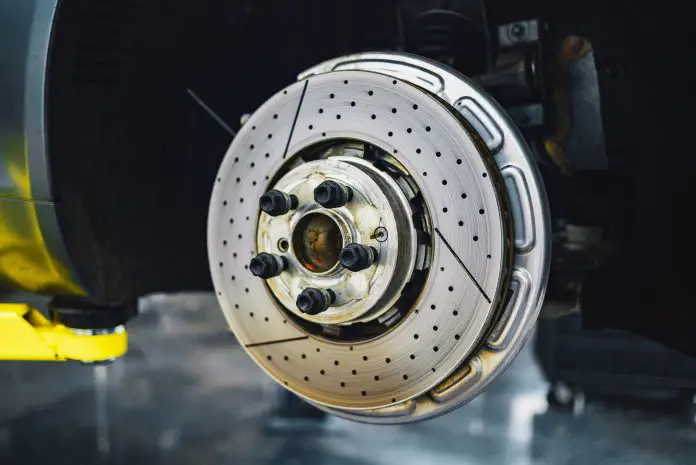One of the most common advisories you will find on an MOT is the “brake disc worn, pitted, or scored but not seriously weakened” warning. For a lot of drivers, this message is considered a relatively minor advisory and is something that the majority of motorists ignore.
However, while a car with worn, pitted, or scored brake discs can pass an MOT, they can still pose a danger if left unchecked. It is important, then, to understand the extent of the problem.
Below, we’ll take a look at the “brake disc worn, pitted, or scored but not seriously weakened (1.1.14 (a) (ii))” advisory and discuss what to do about problem for yourself. We’ll also go over the options in repairing or fixing worn brake discs and why you should always stay on the side of caution.
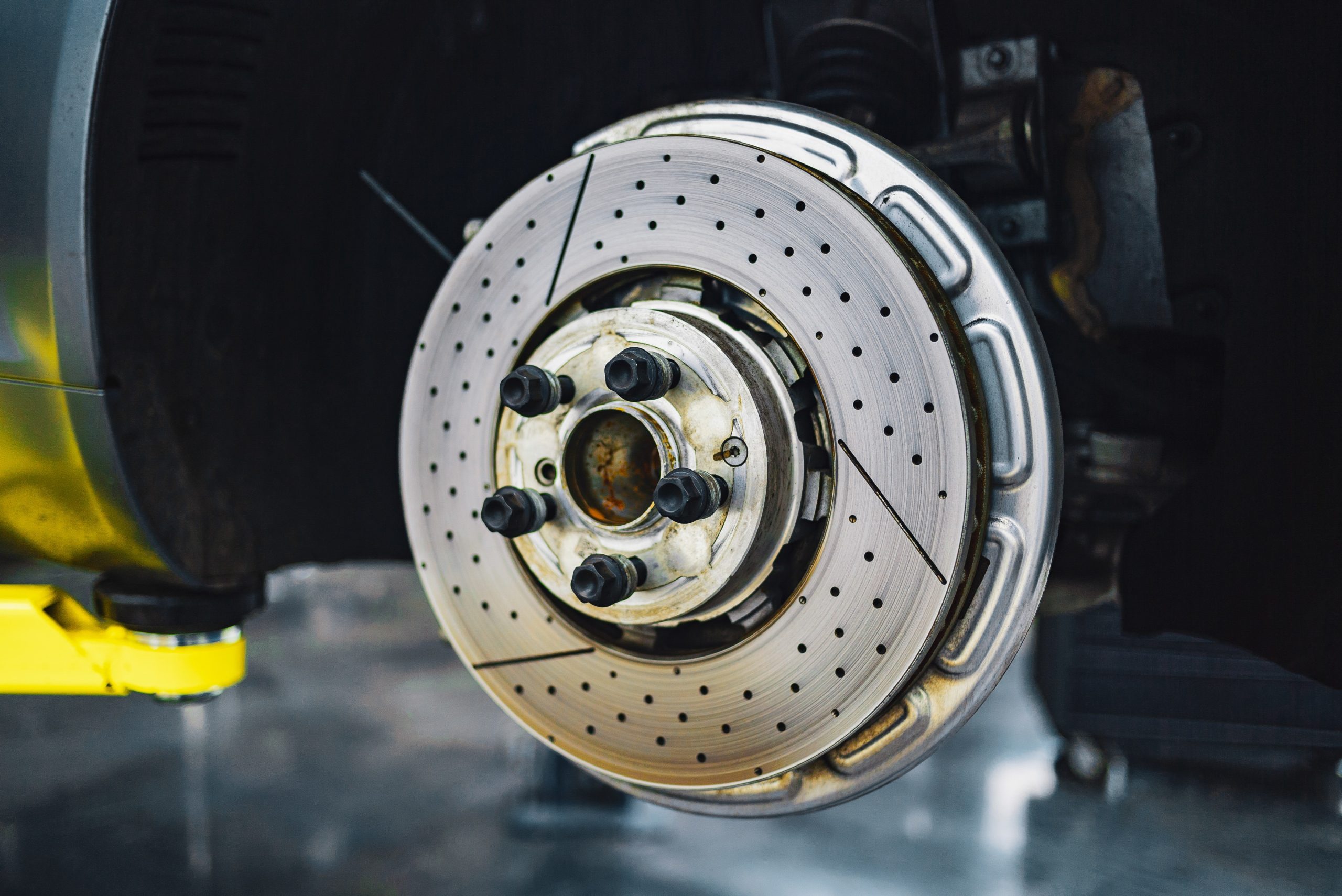
What does brake disc worn pitted or scored mean?
The “brake, disc worn, pitted, or scored” advisory is part of the MOT inspection manual and can be found under the Brakes, Condition and Operation section (1.1.14 (a) (ii)). It is given by MOT inspectors when they discover a problem with your brake discs that do not yet require replacement. This means that while the brake discs are showing signs of usage, they are still serviceable and your car can still brake safely, if not perfectly.
- Worn: Over time, usage will make the brake disc become thinner. The brake disc surface will have a thickness that the manufacturer recommends not to be exceeded. The official MOT guidance, however, does state that inspector judgment should be used and that exceeding this can still pass an MOT.
- Pitted: If a brake disc is pitted it will show small, relatively shallow holes on the surface. This will look rusty and be brown in colour.
- Scored: A scored brake disc will have uniform lines running the entire circumference of its surface. While these lines can be caused by abrasion, they are just as often where the brake pad is not meeting the surface of the disc, leaving unsmooth marks.
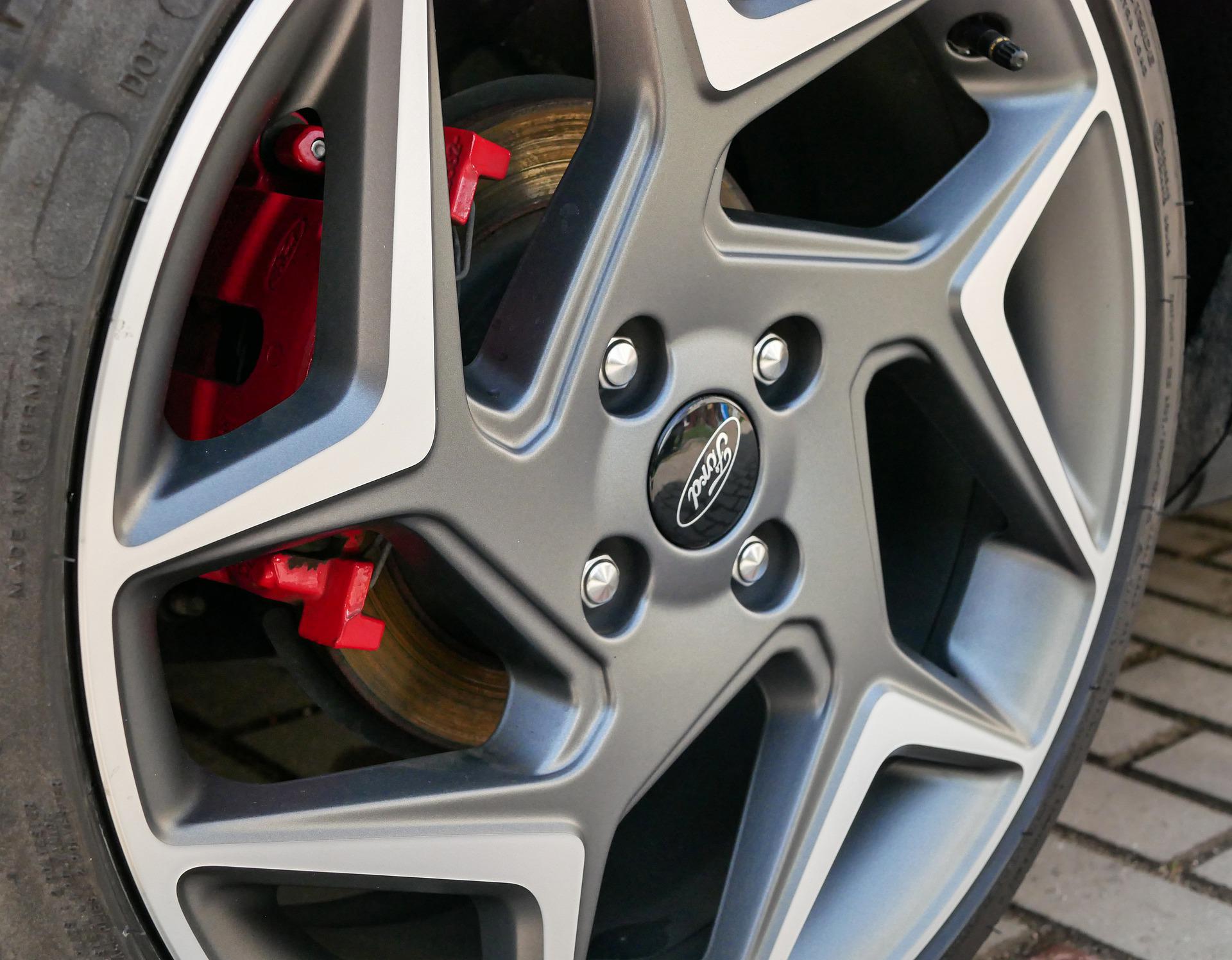
Signs of worn, pitted, or scored brakes
While the worn, pitted, or scored warning does not require immediate attention, it does mean you should keep your eye on your brakes. Knowing the signs that your brake discs are beginning to wear down is something that can potentially avoid further car troubles, accidents, or worse.
Fortunately, the signs that brakes are failing are fairly obvious and can be identified without mechanical experience.
Vibrations or shaking when braking
If you notice your steering wheel vibrates or you experience a shaking sensation when braking, it could be that your brake discs are beginning to fail. These vibrations can be caused by scores and grooves on the surface of the disc which causes a vibration through the steering column upon applying the brake.
Squeaking or grinding sound
One of the more obvious signs your brake discs will need replacing soon is a scraping or squealing sound upon braking. While your brake discs might not be completely flat if they are worn down or warped in some way. The friction from brake pads can cause this sound.
This is also a symptom of worn out pads as the metal structure begins to rub against the metal of the disc. It is important to address this right away to avoid serious braking performance issues & further damage to the disc.
Slow braking
You might also notice coming to a stop takes longer than it used to. As brake discs experience wear and tear, their ability to brake quickly is diminished. While this might not be MOT fail-worthy, it can make your brakes feel spongey and make driving feel a little unnerving. It’s important to keep a close eye on your stopping distance as it can indicate the wear of your brake discs has gone beyond a safe point.
Sluggish acceleration
While it might seem counter-intuitive, if your car is slow to accelerate, it could mean your brake discs are beginning to fail or even require replacement. If a brake disc becomes warped or corroded, it can cause brakes to seize temporarily, reducing your car’s ability to accelerate.
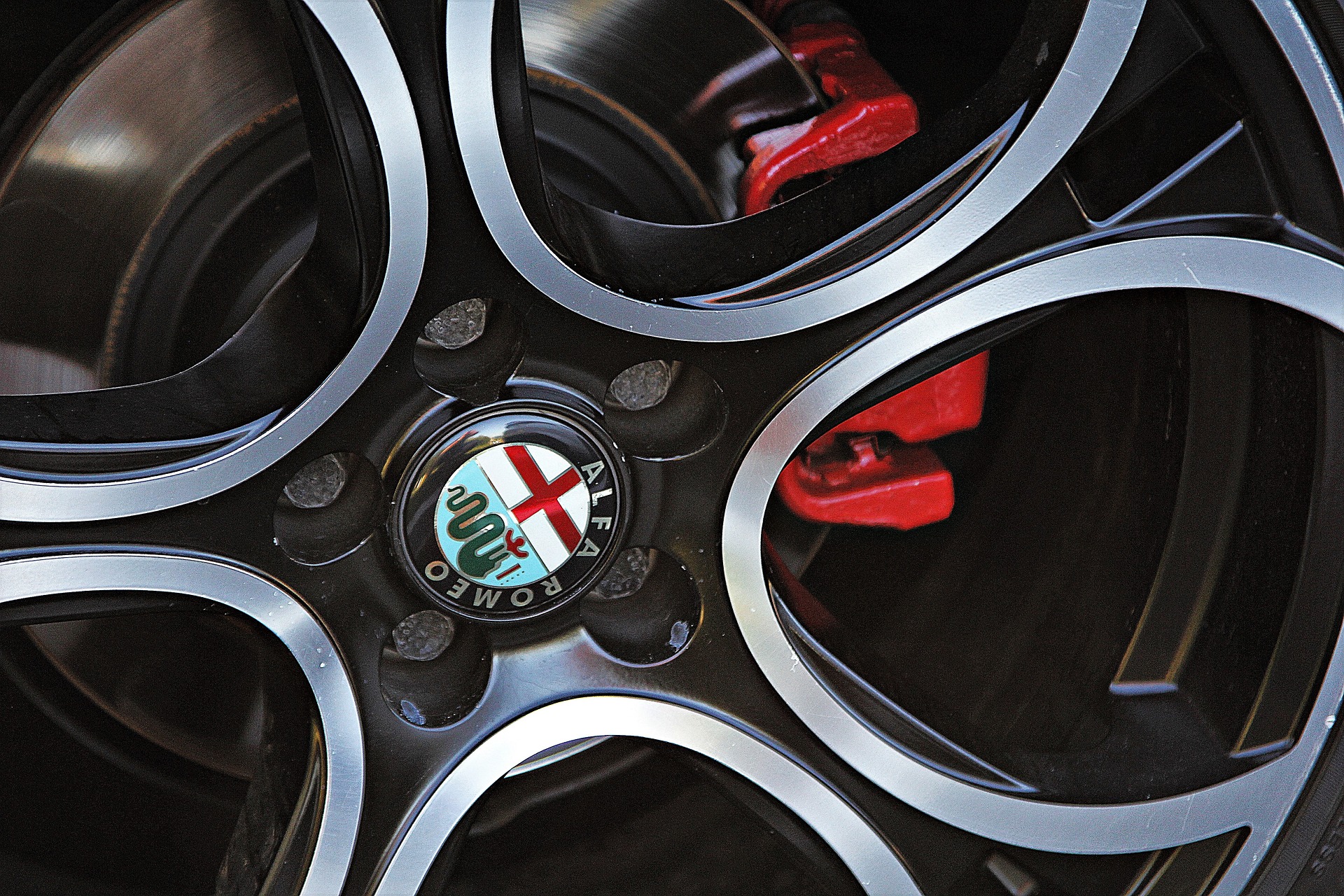
What causes worn, pitted, or scored brake discs?
While there are a myriad of reasons that the condition of brake discs deteriorates, these are the most common causes:
General usage
Modern car brakes still operate on a fairly simple principle of applying friction. While the materials and methods have become refined over the years, this still generates heat and wears the surface of brakes in the process.
Moisture & humidity
Wet road conditions or high air humidity can also corrode brake discs. This can cause pitting as moisture is left to corrode the disc’s surface over time.
Road salt
Anti-icing, road salt can also cause brake discs to corrode. Road salt is made from standard sodium chloride. While this helps lower the melting point of ice, the chemical process can have an oxidation effect on iron and steel, causing corrosion.
Worn brake pads
If your brake pads have uneven wear or are worn down, they can cause damage to your brake discs. This can score the brake discs as a non-treated surface compresses against the surface.
Improper fitting
If a brake disc has been improperly fitted, it may become worn unevenly. A brake disc should be flush to brake pads and not be warped. You will experience vibrations, poor handling, and potentially sluggish acceleration if it is not.
Heavy/frequent braking
Brake discs can also become worn due to poor driving habits or non-standard journeys. Regularly going from high-speed driving to slow speeds, for example, can introduce excessive wear on your brake discs.

Do pitted rotors need to be replaced?
Brake discs and rotors are the same, with some people referring to them differently.
All brake discs will show signs of age eventually. This includes becoming rusty and pitted as moisture is introduced to the rotor surface. If the rust is deep enough, the discs should likely be replaced as it will gradually reduce performance.
Do scored brake discs need replacing?
Scored brake discs are typically caused by worn-down brake pads. If they become overly worn, the metal base of the pad will begin to mark the brake disc surface. Scoring can also be caused by grit and other debris getting stuck in the braking mechanism.
While light scoring is quite common and will not fail an MOT, severe scoring requires brake discs to be changed. Failure to do so can cause brakes to not work as well and potentially cause an accident.
How to check your brake discs
You can check your brake discs yourself quite easily. With your vehicle safely parked, turn your steering wheel to a neutral position. Next, peer through the opening on your wheel alloys and visually inspect the surface of the disc brake. Ideally, this should be shiny and not have any visible cracks, scoring, rust, or pitting.
Vehicles with solid hub caps can be a little less simple as the wheel trim blocks the view of the callipers. To inspect the brakes you may need to remove the wheel/lift the vehicle up on a ramp to get a good look.
If in doubt, a trained mechanic can quickly check the condition of your brake discs. They can even measure them using specialised callipers.

Tips to prolong the life of your brake discs
As a mechanical system with many moving parts, your brake discs along with other components will wear down over time. However, you can still prolong the life of your brake discs with the following tips:
- Replace brake fluid every 1-2 years: Most vehicle manufacturers recommend that you change your brake fluid every 2 years or less. This recommendation is regardless of how many miles you complete as moisture naturally finds its way into the brake fluid. If your brake fluid does not work correctly, it can affect how brake pads are applied to discs. This causes uneven wear on both.
- Use economic driving: Motorists should also attempt to drive economically. This means using engine braking and natural slow-down to reduce speed when possible, and avoiding over-acceleration or harsh braking. Driving smoothly and gently in this way is better for your brake discs. It is also good for fuel economy, increasing your range by around 15%.
- Empty your boot: The more weight your car is holding the more stopping power it will require to come to a halt. This added stopping power means brakes will experience more stress, causing additional wear to discs and pads. You can help prevent this by emptying your boot and only carrying the essentials in your car. This reduces your stopping distance and the strain on the braking system.
- Always use your right foot to brake: It can be tempting in automatic cars or in specialised driving situations with manual cars to use your left foot to apply the brake. This should be avoided, however. Applying both the brake and the accelerator at the same time is a sure-fire way to wear down brakes quickly.
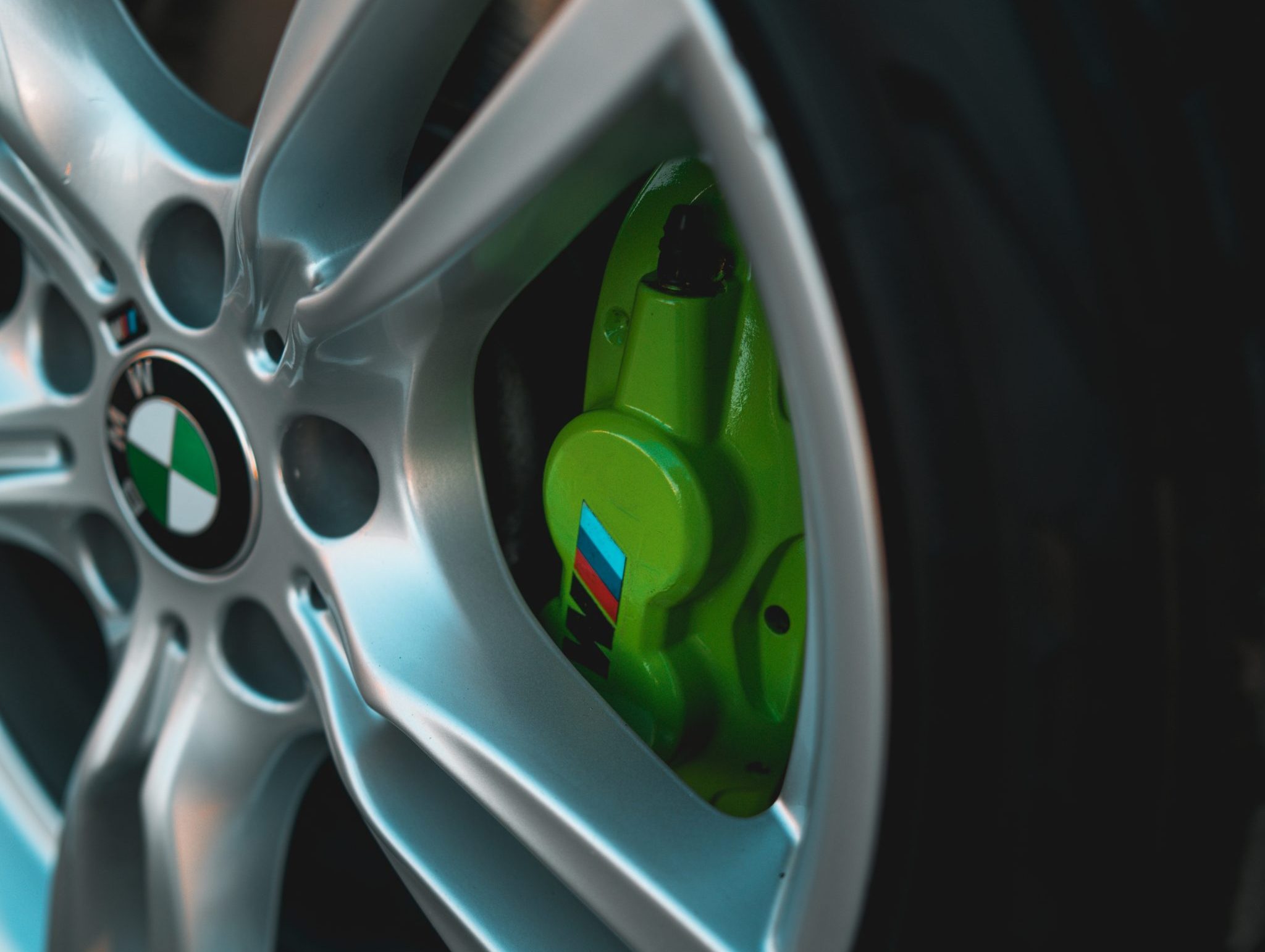
Frequently Asked Questions
Is it safe to buy a car with this problem?
Ultimately, it is safe to buy a car with the “worn, pitted, or scored” brake advisory. This means a qualified MOT inspector has determined the car is safe to drive for now. There have been several cases reported to the UK Ombudsman with disgruntled new owners soon having to replace brake discs after purchase. In each case, it was deemed the car was sold fully working and in drivable condition. This said, make sure this is reflected in the price of the vehicle.
How dangerous is a “worn, pitted or scored” MOT advisory?
While there is no immediate threat from this advisory, it should not be ignored. Brakes are perhaps the most important part of a car and should be treated as such. Most brake discs with this advisory will last weeks, if not months before completely failing. Just like minor oil leak advisories, you should replace brake discs at this point to avoid accidents.
Are brake discs expensive?
Brake discs vary in price but a pair costs on average between £90-100. Luxury brand cars and larger vehicles tend to have more expensive components.
With labour, replacing front and back brake discs costs around £300-400 depending on your vehicle and locale. It is highly recommended to change the pads and have your parking brake system inspected at the same time too, not least to save on future labour costs and improve safety.
Conclusion
We hope this has been an insightful article on this common MOT issue. Don’t forget to check your brakes regularly and have them inspected by a professional if you are unsure.
If you have suffered your own brake disc worn pitted or Scored issues, feel free to leave us a comment below.

